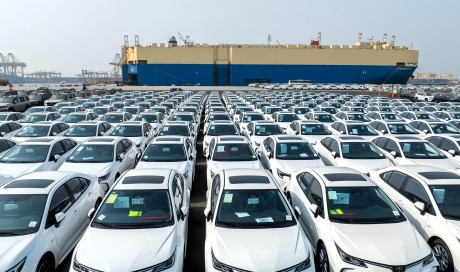Indian expatriates living in the UAE and abroad sent the largest amount of remittances home in 2017 among low- and middle-income countries globally, suggests a new World Bank report.
India recorded remittance receipts of $69 billion last year, placing it ahead of other countries such as China ($64 billion), the Philippines ($33 billion) and Egypt $20 billion), the report noted.
The bank said remittances to low- and middle-income countries topped a total of $466 billion last year, an increase of 8.5 per cent compared to $429 billion in 2016. The total global remittances, which include flows to high-income countries, grew 7 per cent to $613 billion in 2017, from $573 billion in 2016.
"While remittances are growing, countries, institutions, and development agencies must continue to chip away at high costs of remitting so that families receive more of the money. Eliminating exclusivity contracts to improve market competition and introducing more efficient technology are high-priority issues.”
- Dilip Ratha | Lead author of the World Bank report
The report forecast that “remittances are expected to continue to increase in 2018, by 4.1 per cent to reach $485 billion. Global remittances are expected to grow 4.6 per cent to $642 billion in 2018”.
“While remittances are growing, countries, institutions, and development agencies must continue to chip away at high costs of remitting so that families receive more of the money. Eliminating exclusivity contracts to improve market competition and introducing more efficient technology are high-priority issues,” said Dilip Ratha, lead author of the report.
Remittances appear to show no sign of slowing in 2018, the report said, with countries in South Asia seeing small single-digit gains.
“Remittances to South Asia grew a moderate 5.8 per cent to $117 billion in 2017. Remittances to many countries appear to be picking up after the slowdown in 2016. Remittances to India picked up sharply by 9.9 per cent to $69 billion in 2017, reversing the previous year’s sharp decline,” stated the report.
“Flows to Pakistan and Bangladesh were both largely flat in 2017, while Sri Lanka saw a small decline (-0.9 per cent). In 2018, remittances to the region will likely grow modestly by 2.5 per cent to $120 billion.”
Promoth Manghat, CEO of UAE Exchange Group, told Gulf News on Tuesday that the year’s forecast seems accurate given rebounding remittance figures.
$466b remitted to low and middle-income countries last year
Remittances from the UAE to India remain stable by expats sending money home to support families and others who are chiefly remitting funds for savings and investments in their home country, he said.
He noted that the recent depreciation of the rupee has prompted many to send remittances now to gain extra benefits at the receiving end.
“The amount of money being sent will vary. When the rupee depreciates, they send more money naturally,” he said, adding there will always be “a need for some people to send money. They are also repatriating their savings and earnings”.
In March, the fourth-quarter of 2017 figures released by the UAE Central Bank revealed that remittance outflows from the UAE shot up by Dh1 billion in December 2017 from the Dh42.2 billion remitted during the same period last year.
Dh4.1b remittances received from UAE by Pakistan in 2017 fourth quarter
The lion’s share of funds being transferred out of the UAE, the UAE Central Bank said, (approximately 70 per cent) landed in seven countries, with India taking the largest amount coming in at Dh14.8 billion or roughly 34 per cent.
Pakistan was reported to have received the second-largest amount of funds of Dh4.1 billion in the 2017 fourth quarter followed by the Philippines, with Dh3.1 billion.
The World Bank report, meanwhile, said other regions also witnessed growth in 2017 spurred on improved oil sales after disappointing 2016 numbers.
Dh3.1b remittances received from UAE by Philippines in 2017 fourth quarter
Remittances to the Middle East and North Africa grew 9.3 per cent to $53 billion in 2017, driven by strong flows to Egypt, the report stated.
Remittances to Sub-Saharan Africa accelerated 11.4 per cent to $38 billion in 2017, supported by improving economic growth in advanced economies and higher oil prices benefiting regional economies.
Share This Post















